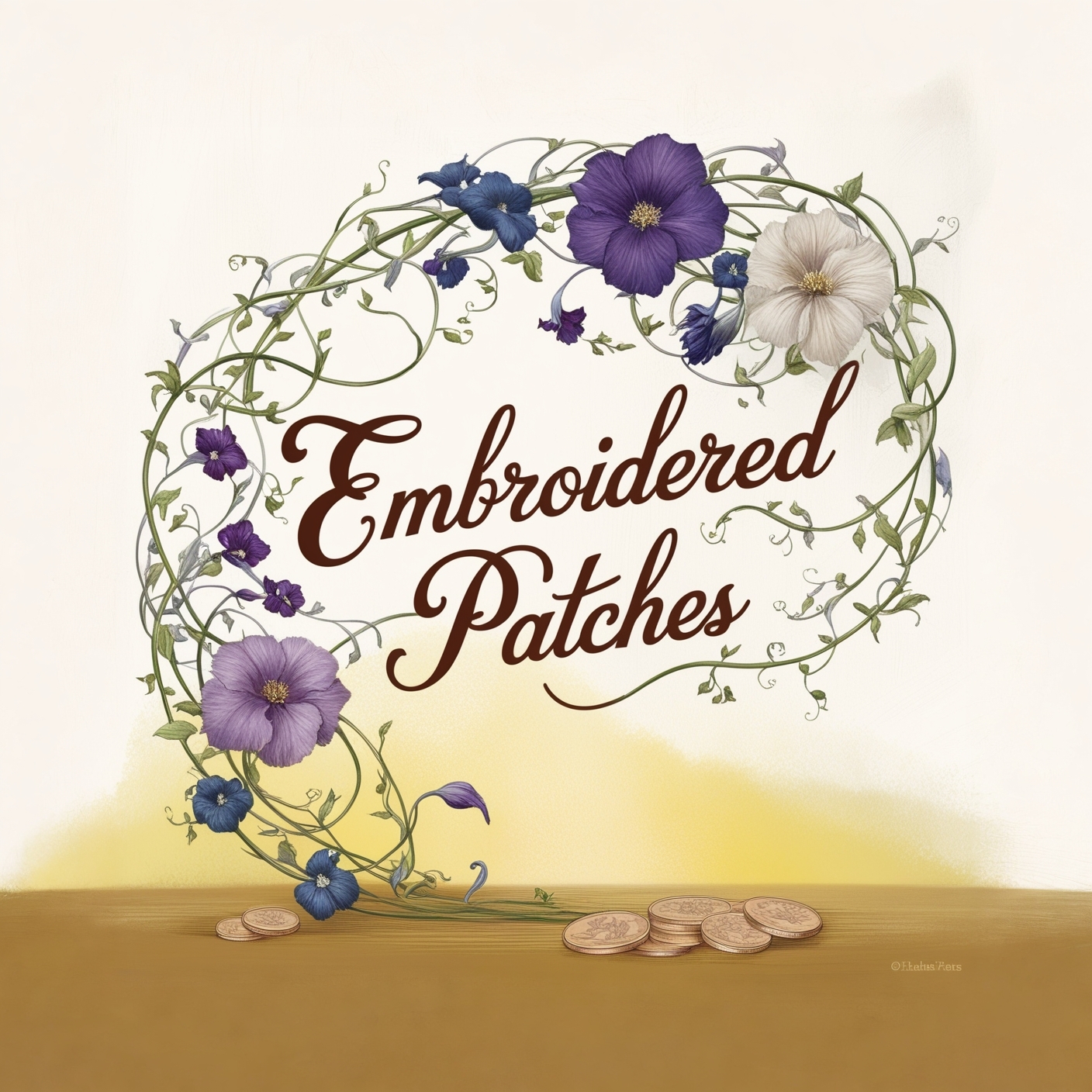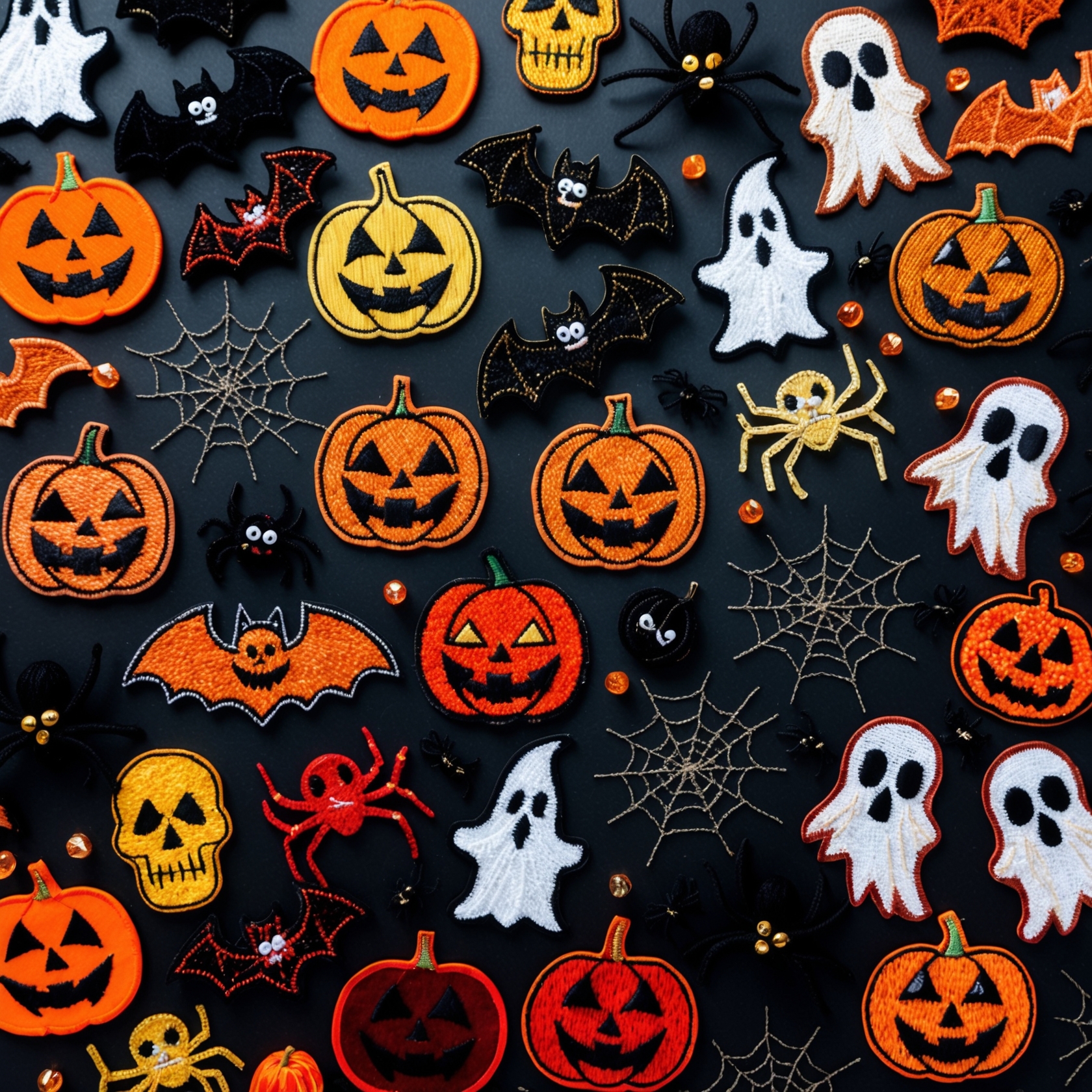Embroidered patches are a versatile and popular way to add a unique touch to clothing, uniforms, accessories, and more. They can represent affiliations, achievements, brand identity, and personal style. However, selecting the best embroidered patches requires careful consideration of various factors to ensure you receive a high-quality product that meets your design and functional needs. This guide will provide a comprehensive overview of what to look for in embroidered patches, from design elements to production techniques and materials.
Embroidered patches have been used for centuries to signify membership, commemorate achievements, and enhance personal and organizational identity. Today, they are found on everything from military uniforms and scout gear to corporate apparel and fashion accessories. With their enduring popularity and wide range of applications, it’s important to understand how to select the best embroidered patches that combine quality craftsmanship with appealing design.
This guide will cover the key aspects of selecting embroidered patches, including understanding their history, identifying quality materials and production techniques, choosing appropriate design elements, and working with reputable manufacturers.
The History and Evolution of Embroidered Patches
Early Beginnings
The art of embroidery dates back thousands of years, with early examples found in ancient China, Egypt, and the Middle East. Embroidery was initially used to decorate clothing and textiles, often symbolizing status, wealth, and cultural identity.
Military and Organizational Use
Embroidered patches became particularly significant in military contexts, where they were used to denote rank, unit, and specialization. The use of patches spread to other organizations, such as police and fire departments, sports teams, and scouting groups, each adopting unique designs to represent their identity and achievements.
Modern Applications
Today, embroidered patches are used in a wide variety of settings. They can be found on fashion items, corporate apparel, promotional products, and more. Advances in embroidery technology have expanded the possibilities for detailed and intricate designs, making embroidered patches a versatile and enduring choice.
Identifying Quality Embroidered Patches
Key Quality Indicators
When selecting embroidered patches, several key indicators can help you determine their quality:
- Thread Count: Higher thread count typically indicates better quality, as it allows for more detailed and intricate designs. Look for patches with dense, even stitching.
- Material: Quality patches are made from durable materials such as twill or felt. The backing material should be strong enough to withstand wear and tear.
- Embroidery Coverage: Full embroidery coverage ensures a high-quality finish. Check that the entire design is covered with threads, leaving no visible gaps.
- Clean Edges: The edges of the patch should be clean and neatly finished, often with a merrowed or heat-cut edge to prevent fraying.
- Color Fastness: Quality patches should retain their colors after washing. Look for patches that use colorfast threads and backing materials.
Choosing the Right Materials
Selecting the right materials for your embroidered patches is crucial for durability and visual appeal. Consider the following options:
- Backing Material: Common backing materials include twill, felt, and canvas. Twill is durable and versatile, while felt offers a softer texture. Canvas provides a sturdy base for heavy-duty applications.
- Thread Type: Polyester and rayon threads are popular choices for embroidery due to their strength and colorfast properties. Metallic threads can add a touch of elegance but may require special handling.
- Backing Options: Various backing options are available, including sew-on, iron-on, adhesive, and Velcro. Choose the option that best suits your application and ease of attachment.
Evaluating Production Techniques
The production techniques used in creating embroidered patches can significantly impact their quality and durability. Key techniques include:
- Embroidery Method: High-quality patches are typically made using computer-controlled embroidery machines, ensuring precision and consistency. Hand-embroidered patches may offer unique, artisanal qualities but can be less consistent.
- Edge Finishing: The edges of the patch should be finished to prevent fraying. Common edge finishes include merrowed edges, which provide a traditional look, and heat-cut edges, which offer a clean, modern appearance.
- Stabilizers: Stabilizers are used to support the fabric during the embroidery process, preventing distortion and ensuring a smooth finish. Quality patches use appropriate stabilizers for the chosen backing material.
Designing Effective Embroidered Patches
Key Design Elements
Creating an effective embroidered patch involves several key design elements:
- Shape and Size: Choose a shape and size that best fits your design and intended application. Common shapes include circles, squares, and shields, but custom shapes can add a unique touch.
- Colors: Select colors that complement your design and convey the desired message. Consider the contrast between the thread and backing material to ensure the design stands out.
- Text and Fonts: Use clear, legible fonts for any text included in the design. Avoid overly intricate fonts that may be difficult to read when embroidered.
- Imagery and Symbols: Incorporate imagery and symbols that represent the identity and purpose of the patch. Ensure that the design is simple enough to be effectively rendered in embroidery.
Customization Options
Customization options allow you to create unique patches that meet your specific needs. Consider the following options:
- Specialty Threads: Use metallic, glow-in-the-dark, or UV-reactive threads to add special effects to your patch.
- 3D Puff Embroidery: This technique adds dimension to your patch by raising certain elements of the design.
- Mixed Media: Combine embroidery with other techniques, such as printing or appliqué, to create a multi-dimensional effect.
- Personalization: Add individual names or numbers to create personalized patches for team members or special events.
Working with a Designer
Collaborating with a professional designer can help bring your vision to life and ensure that your patch design is both aesthetically pleasing and functional. A designer can assist with:
- Concept Development: Turning your ideas into a cohesive design concept that reflects your goals and identity.
- Technical Considerations: Ensuring that the design is suitable for embroidery, including considerations for thread count, color choices, and detailing.
- Revisions and Proofing: Making necessary revisions and providing digital proofs to ensure the final design meets your expectations.
Working with Reputable Manufacturers
Choosing the Right Manufacturer
Selecting a reputable manufacturer is essential for ensuring the quality and timely delivery of your embroidered patches. Consider the following factors when choosing a manufacturer:
- Experience and Reputation: Look for manufacturers with a proven track record and positive reviews from previous clients. Experience in producing embroidered patches is crucial for understanding the nuances of the craft.
- Portfolio and Samples: Review the manufacturer’s portfolio and request samples to evaluate the quality of their work. This will give you an idea of their capabilities and attention to detail.
- Customer Service: Choose a manufacturer with excellent customer service, who is responsive to inquiries, provides clear communication, and offers guidance throughout the production process.
Understanding the Ordering Process
Understanding the ordering process can help ensure a smooth and successful experience. Key steps include:
- Initial Inquiry: Contact the manufacturer to discuss your project, including design ideas, quantity, and budget. Provide as much detail as possible to receive an accurate quote.
- Design and Proofing: Work with the manufacturer to finalize the design. This may involve multiple revisions and digital proofs to ensure the design meets your specifications.
- Production Timeline: Discuss the production timeline with the manufacturer, including any deadlines you need to meet. Allow extra time for potential revisions or delays.
- Payment and Shipping: Confirm payment terms and shipping options. Ensure that the manufacturer provides tracking information and a reliable delivery service.
Ensuring Quality Control
Quality control is crucial for ensuring that the final product meets your expectations. Key steps include:
- Approval Samples: Request approval samples before full production begins. This allows you to inspect the quality and make any necessary adjustments.
- Inspection: Conduct a thorough inspection of the final product upon receipt. Check for consistency in stitching, color accuracy, and overall craftsmanship.
- Feedback: Provide feedback to the manufacturer, highlighting any issues or areas for improvement. This helps build a positive working relationship and ensures better results in future projects.
Practical Tips for Selecting Embroidered Patches
Define Your Purpose
Before starting the selection process, clearly define the purpose of your embroidered patches. Consider the following questions:
- What message or identity do you want to convey? Think about the values, history, and identity of your organization or event that you want the patch to reflect.
- Who is the target audience? Are the patches for team members, event participants, customers, or a specific community?
- What is the intended application? Consider where and how the patches will be used, such as on uniforms, bags, hats, or promotional items.
Set a Budget
Determine your budget for the project, considering factors such as quantity, size, and customization options. Keep in mind that higher quality materials and intricate designs may come at a higher cost, but they also provide better durability and visual appeal.
Choose the Right Design and Customization Options
Select a design that reflects your purpose and identity while considering customization options that add uniqueness and value. Balance creativity with practicality to ensure the design is both visually appealing and functional for embroidery.
Consider Durability and Maintenance
Choose materials and production techniques that ensure the durability and longevity of your embroidered patches. Consider factors such as:
- Washability: Ensure the patches can withstand washing and wear without losing their color or integrity.
- Attachment Method: Choose an attachment method that suits the intended use and provides a secure and lasting bond.
- Environmental Factors: Consider environmental factors, such as exposure to sunlight, moisture, and abrasion, that may affect the patches’ durability.
Plan for Future Needs
When ordering embroidered patches, consider future needs and potential reorders. Ordering a larger quantity initially can often result in cost savings and ensures you have a consistent supply of patches for future use.
Case Studies: Successful Embroidered Patch Projects
Case Study 1: Corporate Branding Patches for XYZ Tech
Background
XYZ Tech, a leading technology company, wanted to enhance their brand visibility and employee pride through embroidered patches. They sought high-quality patches to be used on employee uniforms, promotional items, and event merchandise.
Implementation
XYZ Tech collaborated with a reputable manufacturer to create custom patches featuring their logo, company colors, and a tagline that encapsulated their mission. The patches were made from durable twill with high-thread-count embroidery and a heat-cut edge for a clean finish.
Impact
The embroidered patches helped XYZ Tech strengthen their brand identity and foster a sense of pride among employees. The patches were well-received at trade shows and corporate events, enhancing the company’s visibility and professional image.
Case Study 2: Scout Troop 567 Achievement Patches
Background
Scout Troop 567 wanted to create custom patches to recognize scouts’ achievements and promote engagement in various activities. They sought patches that were both visually appealing and durable enough for outdoor use.
Implementation
The troop worked with a designer to create patches for various merit badges, rank advancements, and special events. The patches featured vibrant colors, detailed embroidery, and iron-on backing for easy attachment to uniforms.
Impact
The achievement patches motivated scouts in Troop 567 to actively participate in activities and strive for new milestones. The patches served as visible symbols of their accomplishments and fostered a sense of unity and pride within the troop.
Case Study 3: Local Sports Team Spirit Patches
Background
A local sports team wanted to create spirit patches for fans and players to promote team pride and community support. They sought high-quality patches that could be easily attached to clothing and accessories.
Implementation
The team partnered with a manufacturer to design patches featuring the team logo, mascot, and colors. The patches were made with polyester threads and a sew-on backing, ensuring durability and a professional appearance.
Impact
The spirit patches became a popular item among fans and players, enhancing team spirit and community involvement. The patches were proudly displayed on hats, jackets, and bags, promoting the team’s identity and fostering a strong sense of community support.
Conclusion
Selecting the best embroidered patches involves careful consideration of design elements, materials, production techniques, and working with reputable manufacturers. By understanding the key indicators of quality and following best practices for design and production, you can create embroidered patches that are durable, visually appealing, and meaningful.
Whether you are creating patches for corporate branding, scout achievements, sports teams, or personal use, this guide provides the knowledge and insights needed to make informed decisions and achieve the best results. Embrace the creativity and versatility of embroidered patches to enhance your identity, commemorate achievements, and foster a sense of pride and unity.
If you are interested in ordering some high-quality custom patches, feel free to call us at 877-912-6407 or fill out a FREE quote here.




